ماژول رگولاتور DC به DC کاهنده با خروجی ۳A 5V USB
ماژول رگولاتور DC به DC کاهنده یک مبدل ولتاژ قدرتمند است که ولتاژهای بالا را به ولتاژ پایینتر تبدیل میکند. این ماژول مخصوصاً برای استفاده در مدارهای الکترونیکی که نیاز به ولتاژ ثابت و بدون تغییر دارند، طراحی شده است. با استفاده از این ماژول میتوان ولتاژهای ورودی از منابع مختلف مانند باتریها، سلولهای خورشیدی و دیگر خروجیهای DC در محدوده ۶ تا ۲۴ ولت را به ۵ ولت ثابت تبدیل کرد.
ویژگیهای کلیدی ماژول رگولاتور DC به DC کاهنده:
-
ولتاژ ورودی: ۶V تا ۲۴V
-
ولتاژ خروجی: ۵V ثابت
-
جریان خروجی حداکثر: ۳ آمپر
-
خروجی: از طریق پورت USB
-
بازدهی: تا ۹۷٫۵%
-
سرعت سوییچینگ: ۵۰۰ کیلوهرتز
-
تلرانس رگولاسیون: ۰٫۵% (حداکثر)
-
حفاظت: دارای مدار محافظ در برابر اتصال معکوس (Reverse Connection) و اتصال کوتاه در خروجی
-
عملکرد: برای تثبیت ولتاژ در مدارهای حساس و تجهیزاتی که نیاز به ولتاژ ثابت دارند
کاربردها:
-
استفاده در پروژههای الکترونیکی و میکروکنترلرها
-
تامین برق ثابت برای دستگاههای USB
-
پروژههای باتریخور و سیستمهای خورشیدی با ولتاژ ورودی متغیر
-
حفاظت در برابر اتصال کوتاه و معکوس برای طول عمر بیشتر تجهیزات
این ماژول با قابلیتهای حفاظتی و بازدهی بالا، یکی از بهترین گزینهها برای کاهش ولتاژ در سیستمهای الکترونیکی حساس است.
Description:
A buck converter (step-down converter) is a DC-to-DC power converter that steps down voltage (while stepping up current) from its input (supply) to its output (load). It is a class of switched-mode power supply (SMPS) typically containing at least two semiconductors (a diode and a transistor, although modern buck converters frequently replace the diode with a second transistor used for synchronous rectification.) and at least one energy storage element, a capacitor, inductor, or the two in combination. To reduce voltage ripple, filters made of capacitors (sometimes in combination with inductors) are normally added to such a converter’s output (load-side filter) and input (supply-side filter).
Converting a higher DC voltage to a lower one is a common requirement found in most electronic circuits. This might be something like converting the 12 V from a battery down to 5V in order to power an electronic board. A portion of that 5V may be further converted down to 3.3V to drive a lower voltage portion of the circuit. It is a class of switched-mode power supply (SMPS) typically containing at least two semiconductors (A diode and a transistor, although modern buck converters frequently replace the diode with a second transistor used for synchronous rectification.) and at least one energy storage element, a capacitor, inductor, or the two in combination.
DC-DC step-down converters basically take a higher input voltage and convert it to a lower output voltage by chopping it up by rapidly switching the output power transistor on and off so that the output essentially looks like a square wave and then using an LC filter to smooth it back into a DC voltage on the output of the filter. DC-DC converters are inherently electrically noisy devices. Its job is to basically take a nice calm flat DC voltage and violently chop it up into pieces and then smooth the pieces back out into a DC voltage again using an output filter. That output filter consists primarily of the inductor and capacitors in the output circuit and depends heavily on the board layout to optimize the quality of the filter.
Features:
Input Voltage: 6~24V DC
Output Voltage: 5.1~5.2V
Output Current: Maximum 3A
Conversion Efficiency: up to 97.5%
Switching Frequency: 500KHz
Output Ripple: 10mV or so (12V to 5V3A) 20M bandwidth
Output Indication: Output voltage indicator is Red
Operating Temperature: Industrial grade (-40°C to +85°C) (the higher the ambient temperature, the lower the output power)
Output Overvoltage Protection: Yes, input 1.5A fuse, output 5V with 300W TVS tube clamp protection.
Full load Temperature Rise: 30°C
Quiescent Current: 0.85 mA
Load Regulation Rate: ±۱%
Voltage Regulation Rate: ±۰٫۵%
Dynamic Response Speed: 5% 200uS
Output Short Circuit Protection: Yes
Input Reverse Connection Protection: Yes , Input has reverse protection diode
Size: 26.4 * 15 * 7.4 mm
| وزن | 100 گرم |
|---|

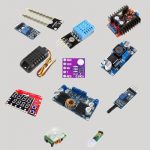







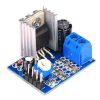






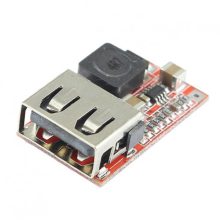



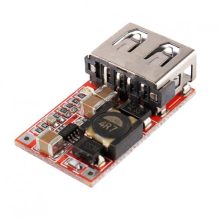



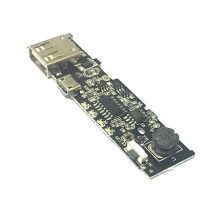








نقد و بررسیها
هنوز بررسیای ثبت نشده است.